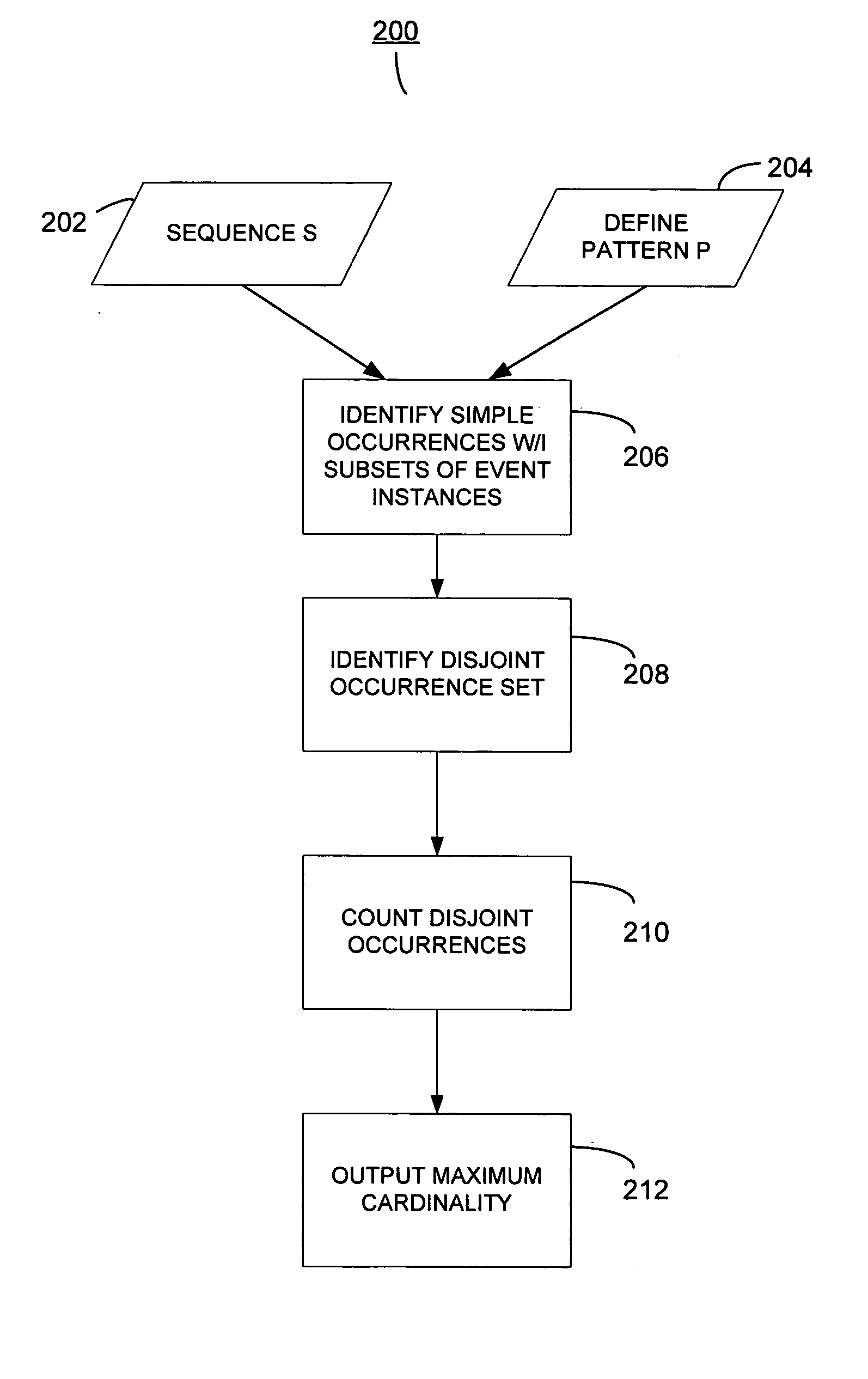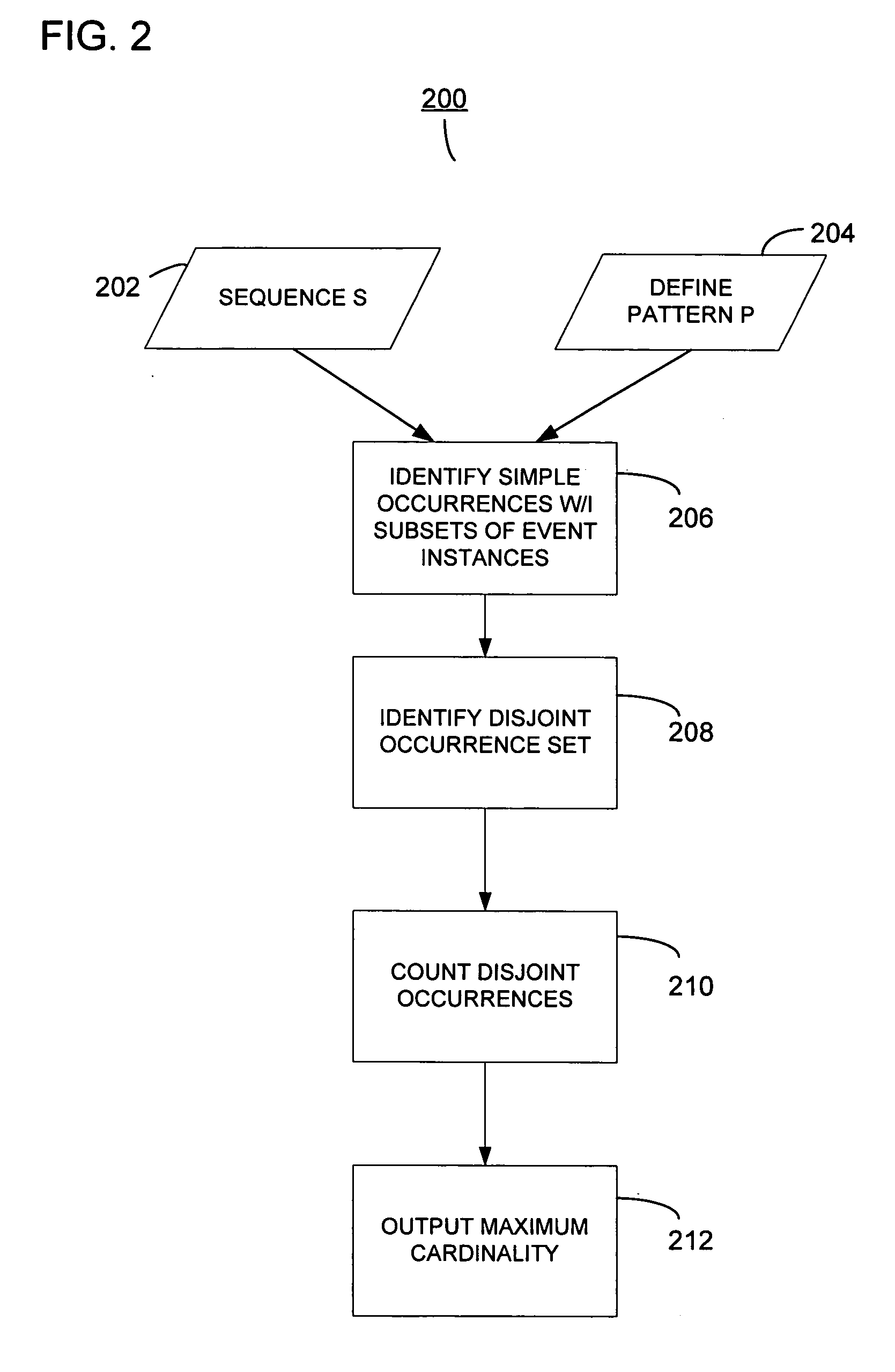System and method for analyzing a pattern in a time-stamped event sequence
a time-stamped event and pattern technology, applied in the field of data processing, can solve the problems of limited amount of data analyzed, events are generally subject to ordering and temporal constraints, and their contents have no ordering and are not easily compared, so as to improve efficiency and effectiveness, reduce data mining costs, and increase the possibility of mining data
- Summary
- Abstract
- Description
- Claims
- Application Information
AI Technical Summary
Benefits of technology
Problems solved by technology
Method used
Image
Examples
Embodiment Construction
[0038] The following description of the implementations and embodiments is merely exemplary in nature and is in no way intended to limit the invention, its application, or uses. For purposes of clarity, the same reference numbers are used in the drawings to identify similar elements.
[0039] Before describing a system or method for determining the maximum cardinality of a pattern in a sequence, determining the expected maximum cardinality, and identifying a surprising pattern in a sequence, one or more concepts associated with a sequence will be introduced and defined. Thereafter, a detailed description of various embodiments will be described.
[0040] Following is a list of symbols and terms used throughout this specification. This listing is intended for illustration purposes and is not intended to be limiting. [0041] 1. e—an event instance. [0042] 2. A, B, C, D, and E—Capital Letters are indicative of categories of events. [0043] 3. C(e)—a category of event instance e [0044] 4. b=a...
PUM
 Login to View More
Login to View More Abstract
Description
Claims
Application Information
 Login to View More
Login to View More - R&D
- Intellectual Property
- Life Sciences
- Materials
- Tech Scout
- Unparalleled Data Quality
- Higher Quality Content
- 60% Fewer Hallucinations
Browse by: Latest US Patents, China's latest patents, Technical Efficacy Thesaurus, Application Domain, Technology Topic, Popular Technical Reports.
© 2025 PatSnap. All rights reserved.Legal|Privacy policy|Modern Slavery Act Transparency Statement|Sitemap|About US| Contact US: help@patsnap.com



